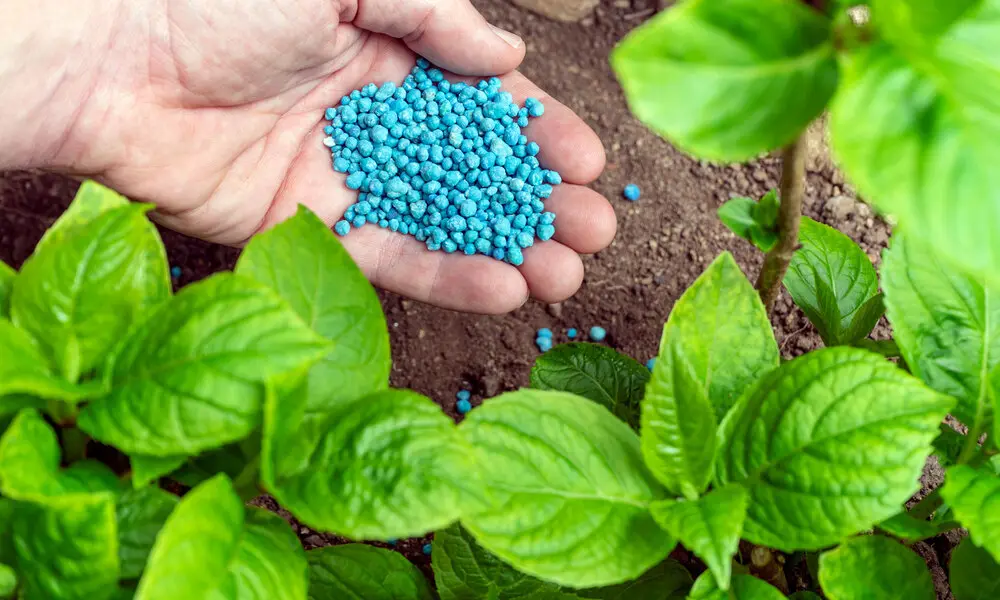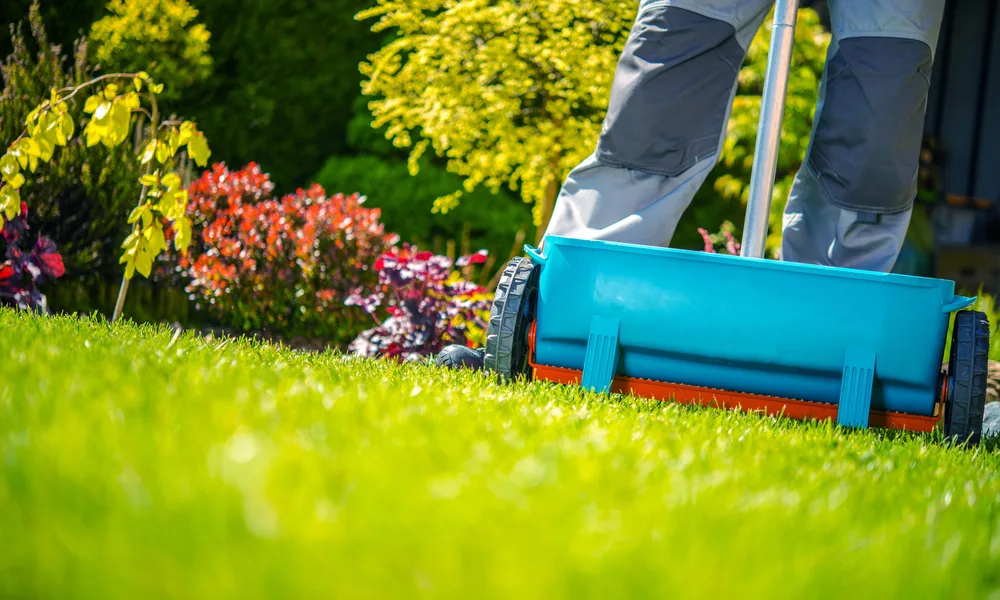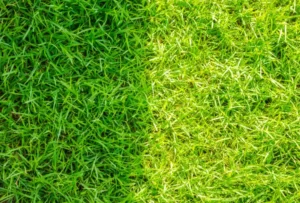How often should I fertilize my lawn is a common question for homeowners aiming to achieve a lush, green yard. Regular fertilization is key to maintaining healthy grass, as it replenishes essential nutrients that soil naturally loses over time. Without proper feeding, your lawn can become weak, patchy, and more vulnerable to weeds and disease. Developing a consistent lawn fertilizer plan not only promotes strong root growth and vibrant color but also supports overall lawn resilience. In this guide, we’ll help you understand when and how often to fertilize your lawn for best results throughout the year.
Why Lawn Fertilization Matters

Keeping your lawn properly fertilized is one of the most important steps in maintaining a healthy, beautiful yard. A consistent lawn fertilizer plan not only enhances the appearance of your grass but also strengthens its ability to thrive in different seasons and conditions.
Healthier, Greener Grass
A regular fertilization schedule gives your lawn the nutrients it needs to grow thick and vibrant. Essential elements like nitrogen promote lush green blades, while phosphorus supports strong root development and potassium boosts overall plant health. When these nutrients are applied at the right time and in the right amounts, your lawn becomes visibly healthier and easier to manage.
Natural Weed Control
Fertilized lawns grow dense and full, leaving less room for weeds to sprout. When the grass is thick and strong, it crowds out unwanted plants naturally. This means fewer weeds without relying heavily on herbicides. Following a proper lawn fertilizer plan helps create a lawn that defends itself against common weed invaders.
Improved Lawn Color and Texture
One of the most noticeable benefits of lawn fertilization is the deep, rich color it produces. Well-fed grass maintains a vibrant green shade and a soft, even texture. This boost in appearance adds curb appeal and makes your yard more enjoyable for everyday use.
Stronger Root Systems
Fertilization doesn’t just work above the surface—it builds strength below the ground. Nutrients like phosphorus encourage deeper root growth, which helps your lawn access water and nutrients more efficiently. A strong root system means better drought tolerance and less damage from foot traffic or environmental stress.
Increased Resilience Year-Round
Lawns that are regularly fertilized can better resist pests, disease, and weather changes. They bounce back faster from heatwaves, cold snaps, and heavy use. Whether it’s summer drought or winter frost, a well-maintained fertilization routine helps your lawn stay strong and healthy throughout the year.
Long-Term Cost Savings
Although fertilizing your lawn requires a bit of investment, it pays off in the long run. Healthy lawns need less water, fewer weed treatments, and less repair work. Over time, this leads to lower maintenance costs and more consistent results.
By building your personal lawn program and sticking to a fertilization schedule, you set your lawn up for lasting success. Whether you’re caring for a small yard or managing a larger property, proper fertilization is the foundation for a greener, tougher, and more attractive outdoor space. If you want Lawn care services contact none other than Lakota Design Group.
How Often Should I Fertilize My Lawn?
How often should I fertilize my lawn? While the general recommendation is 4 to 6 times per year, the true answer depends on multiple factors grass type, climate, soil conditions, and how you use your lawn. Fertilizing too often can burn your grass or promote shallow roots. Not fertilizing enough can lead to weak, patchy turf with increased weeds and disease. A well-structured lawn fertilizer plan balances these variables for healthy, long-lasting results.
Cool-Season vs. Warm-Season Grasses
Understanding your grass type is the first step in determining fertilization frequency.
Cool-Season Grasses
These grasses grow most vigorously in spring and fall. Common types include:
- Kentucky bluegrass
- Tall fescue
- Perennial ryegrass
Fertilization Schedule:
Cool-season lawns typically need fertilization in:
- Early spring (to jumpstart growth)
- Late spring (to support new blades)
- Early fall (to repair summer stress)
- Late fall (to strengthen roots before winter)
Optional applications in midsummer can be added with caution, as these grasses slow down during heat. Over-fertilizing in summer may stress the lawn.
Warm-Season Grasses
These grasses thrive during hot months. Common types include:
- Bermuda grass
- St. Augustine grass
- Zoysia grass
Fertilization Schedule:
Warm-season lawns benefit from feeding in:
- Late spring (when grass fully greens up)
- Midsummer (peak growth period)
- Early fall (to maintain thickness before dormancy)
Avoid fertilizing too early in spring or too late in fall—this can promote growth at the wrong time, weakening the lawn.
Factors That Influence Fertilization Frequency
Even within the same region or lawn type, several conditions affect how often you should fertilize:
Soil Type
- Sandy Soil drains quickly, losing nutrients faster. These lawns often require more frequent but lighter fertilizations.
- Clay or Loam Soil retains nutrients longer and may need fewer applications. However, compaction can limit nutrient uptake, so aeration might be necessary.
Climate and Weather Patterns
- Warmer Climates extend the growing season, especially for warm-season grasses, increasing fertilization needs.
- Cooler Climates have shorter growing windows, especially for cool-season grasses, requiring more strategic timing.
- Rainfall also plays a role heavy rains may wash away nutrients faster, calling for additional fertilizing.
Lawn Usage
- High-Traffic Lawns (kids, pets, entertaining areas) experience more wear and tear. These lawns benefit from more frequent feeding to recover and maintain density.
- Low-Use Lawns (ornamental or shaded lawns) might need fewer treatments, depending on growth rate.
Grass Variety
Some grass types are naturally aggressive growers and require more nutrients, while others are slow-growing and lower-maintenance. For example:
- Bermuda grass is fast-growing and nutrient-hungry.
- Fine fescue grows slowly and requires less frequent fertilization.
Build Your Personal Lawn Program
Instead of guessing or copying a one-size-fits-all schedule, the best approach is to Build Your Personal Lawn Program. This means evaluating your:
- Local climate conditions
- Soil health and pH
- Grass species
- Watering habits and irrigation
- Yard usage and foot traffic levels
With this tailored plan, you can apply the right fertilizer at the right time, using the right nutrients (slow-release or quick-release, depending on the season). Many homeowners also conduct a soil test to determine nutrient deficiencies this makes your fertilization smarter and more efficient.
You may read about How Much Lawn Care Cost?
When to Fertilize Lawn for Optimal Results

Fertilizing at the right times helps your lawn grow stronger, greener, and more resilient throughout the year. A proper schedule based on seasonal changes ensures your grass gets the nutrients it needs during peak growth periods.
Early Spring (March–April)
- Purpose: Jumpstart root growth and early green-up
- Fertilizer Type: Balanced, slow-release formula
- Tip: Apply once soil warms and grass begins to grow
Late Spring (May–June)
- Purpose: Support active blade growth and strengthen turf
- Fertilizer Type: Nitrogen-rich blend
- Tip: Ideal time to feed before summer heat sets in
Summer (June–August)
- Purpose: Help lawn handle heat, drought, and foot traffic
- Fertilizer Type: Slow-release or organic formula
- Tip: Apply only if lawn is actively growing and well-watered
Early Fall (September)
- Purpose: Repair summer damage and thicken turf
- Fertilizer Type: High-nitrogen mix
- Tip: Best time for overseeding and strengthening roots
Late Fall (October–November)
- Purpose: Prepare lawn for winter and early spring green-up
- Fertilizer Type: High in potassium, low in nitrogen
- Tip: Apply before first frost for best results
Adjusting Frequency for Lawn Conditions
- High-Traffic Lawns: Fertilize 1–2 extra times during growing season to help turf recover from wear
- Patchy or Weak Areas: Spot-fertilize or increase feeding in early fall to promote thicker regrowth
Best Time to Fertilize Lawn: Before or After Rain?
Timing your lawn fertilization around rainfall can improve results—but only if done correctly.
Fertilizing Before Light Rain
Pros:
- Acts as natural watering
- Helps nutrients soak into the soil
- Saves time and water
Tip: Only fertilize if light rain (under ½ inch) is expected.
Fertilizing Before Heavy Rain
Cons:
- Causes runoff and nutrient loss
- Wastes fertilizer
- Can pollute nearby water
Avoid: Fertilizing before heavy storms or if your lawn is sloped.
Fertilizing After Rain
Pros:
- Moist soil absorbs nutrients better
- Reduces risk of grass burn
- Promotes deeper root feeding
Tip: Wait until grass blades dry and the soil is no longer soggy.
Pro Tip:
Always check the weather forecast. Aim for light rain or apply 1–2 days after heavy rain for best results.
Final Thoughts
Fertilizing your lawn at the right time and frequency makes all the difference in achieving a thick, healthy, and weed-resistant yard. Whether you’re dealing with patchy grass, high-traffic wear, or just want a greener lawn, a well-timed lawn fertilizer plan is key. If you need expert advice or personalized guidance, Lakota Design Group is here to help. Contact Lakota Design Group and give your lawn the care it deserves.
FAQs
How Many Times A Year Should I Fertilize My Lawn?
Most lawns benefit from fertilizing 4 to 6 times per year, depending on grass type, climate, and soil health. Adjust frequency based on lawn condition and regional weather.
Can I Fertilize My Lawn Too Often?
Yes. Over-fertilizing can burn your grass, cause excessive growth, or lead to nutrient runoff. Always follow a structured lawn fertilizer plan based on your lawn’s specific needs.
What’s The Best Fertilization Schedule For Cool-Season Grasses?
Cool-season grasses like fescue and Kentucky bluegrass grow best in spring and fall. Fertilize in early spring, late spring, early fall, and late fall for optimal results.
How Often Should I Fertilize Warm-Season Grasses?
Warm-season lawns like Bermuda and zoysia need fertilizing 3 to 4 times during their active growth period typically from late spring to early fall.
Should I Change How Often I Fertilize If My Lawn Gets A Lot Of Traffic?
Yes. High-traffic areas may need an extra feeding during the growing season to help the grass recover and stay thick.





